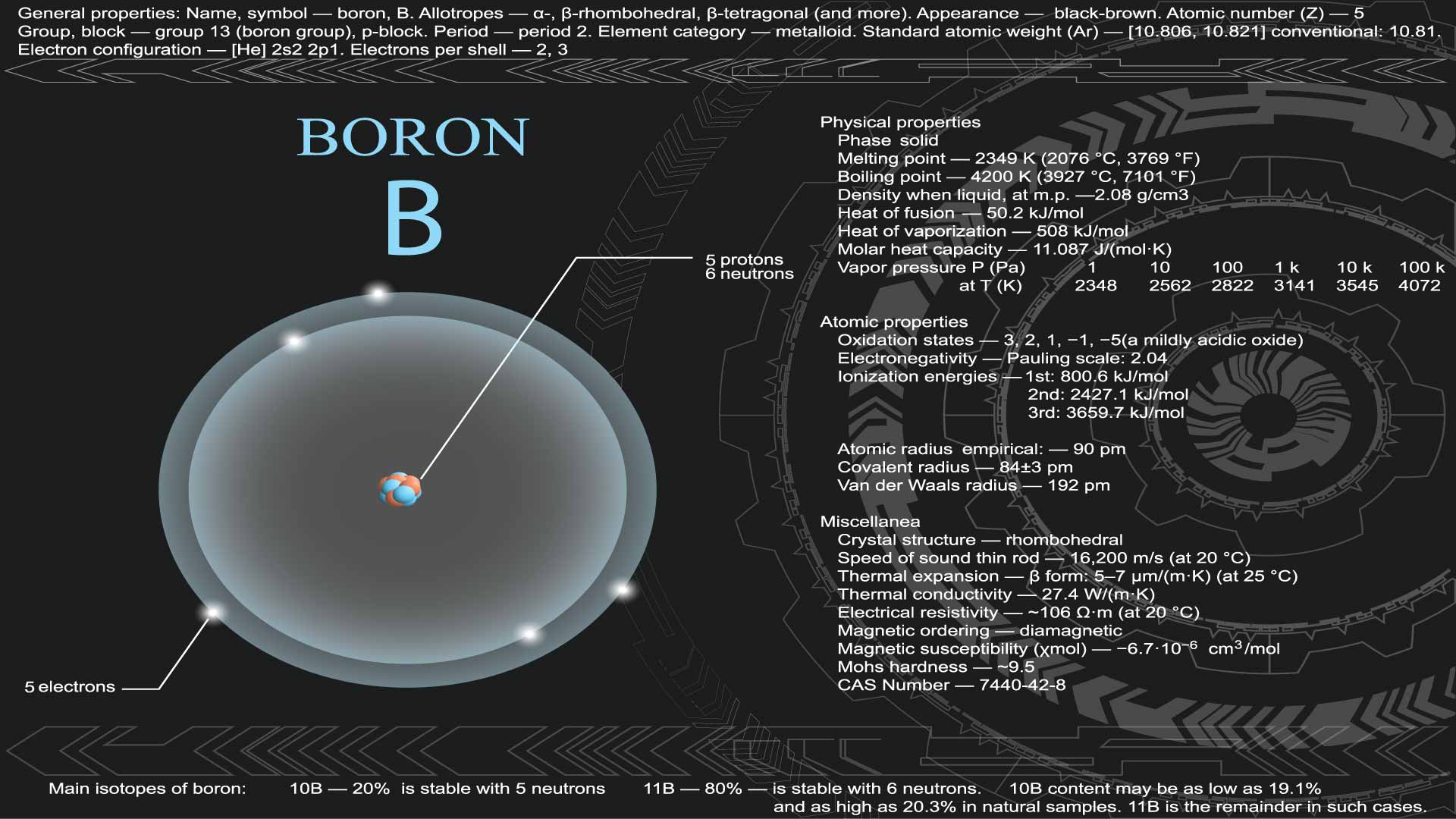MAKING THE SHIFT FROM FOSSIL FUELS A REALITY with BORON
Although fossil fuels including coal, natural gas, and oil have been fueling the modernization of global economies, these fundamental energy drivers for all developed and developing nations since the Industrial Revolution, have been the biggest contributors to greenhouse gas emissions. It is time to look to alternative sources of more efficient energy using metals such as Boron and Lithium.
In its quest to grow, mankind has been irresponsible towards the planet Earth. The United States Environmental Protection Agency has blamed human activities for being responsible for almost all of the increase in greenhouse gases in the atmosphere over the last 150 years.
Even as they have been the fundamental drivers of economic growth, greenhouse gases — Carbon Dioxide, Methane, Nitrous Oxide, and Fluorinated Gases — emitted during the usage of fossil fuels, have been trapping heat, making the planet warmer.

Advanced Energy: A Hot Topic
In March 2021, National Oceanic and Atmospheric Administration (NOAA) published a report “Climate Change: Global Temperature” warning that although warming has not been uniform across the planet, the upward trend in the global average temperature shows that more areas are warming than cooling.
According to NOAA’s 2020 Annual Climate Report, the combined land and ocean temperature has increased at an average rate of 0.13 degrees Fahrenheit (0.08 degrees Celsius) per decade since 1880; however, the average rate of increase since 1981 (0.18°C / 0.32°F) has been more than twice that rate.
The 10 warmest years on record have all occurred since 2005, and 7 of the 10 have occurred just since 2014, NOAA pointed out.
It has sounded alarm bells too, stating that while ocean temperature doesn’t react instantly to the increased heat being trapped by the greenhouse gases, by 2030, the situation would be different. The oceans’ thermal inertia will not matter any longer then, and unchecked carbon dioxide emissions are likely to lead to several additional degrees of warming by the end of the century.
The frighteningly fast rate of this heat getting trapped threatens to have irreplaceable damage to life on Earth, if not snuff it out altogether with climate change reaping disaster via famine, wildfires, and shrinking polar caps.
Given the facts, the contribution of fossil fuels to economic growth looks skewed, mankind is now being prodded to opt for alternate sources of energy that apart from being sustainable, are long-term and do not derail the momentum, a crucial factor to determine their acceptability.
Borates Today Special Report – Advanced Energy
Borates Today’s Special Report on Advanced Energy looks into the issues surrounding this hot topic and examines how Boron and Borates can support initiatives and innovations to improve energy supplies and energy management systems. This free report is available for download today and covers the following topics:
Table of Contents
Making the Shift from Fossil Fuels
Defining Advanced Energy
Advanced Energy Materials
Boron as an Advanced Energy Material
The Quest for New Technologies
Global Warming and Advanced Energy
Government Programs
Government and Industry Initiatives
Business Leadership
Defining Advanced Energy

Boron and Battery production
Sources of energy that are better and beyond the conventional sources of energy – fossil fuels – are categorized as advanced energy. Advanced Energy encompasses technologies that are energy-efficient and sustainable and aid global manufacturing economies concerned to slow down the catastrophic impact of fossil fuels on the planet.
The niche advanced energy options include certain energy sources like solar, wind, hydro, and applications including nuclear, electric vehicles, biofuels, and smart grids.
The Cornell Law School Legal Information Institute defines advanced energy technology as an innovative technology, research, development, demonstration, or commercial application activity necessary to ensure the long-term, secure, and sustainable supply of an energy-critical element, any other innovative energy technology area identified by the Secretary of Energy.
Advanced Energy Materials

Boron Borophene
Mainstream materials and technologies for solar cells, high energy density batteries and solid-state lighting, fuel cells and sustainable batteries, organic solar cells, hydrogen generation, and storage, thermoelectric energy conversion, or artificial photosynthesis, are all categorized as advanced energy materials.
The properties of novel composite materials will determine the success of these future energy systems, with innovative materials science as the enabling technology, the Wiley report states.
IPCC has indicated that in the future, demands for certain metals are projected to multiply significantly. Materials that fulfill the requirements for advanced combustion systems, are sustainable and green, are advanced energy materials.
Boron as an Advanced Energy Material

Boron is a micronutrient that plays an important role in the long-term sustainability of energy management systems. Boron is a metalloid, a chemical element with the atomic number 5. Found in nature as borax, or sodium tetraborate decahydrate (Na2B4O7·10H2O), it is found naturally on Earth throughout the world, including in seawater and soil.
Boron is dubbed as the future fuel of supercapacitors. Boron is a chemical element known for having the highest energy density than lithium, and there’s mounting evidence to indicate that it could power tomorrow’s technology.
Boron can sustain high temperatures without melting, which is why scientists are exploring its potential in areas like advanced hybrid car engines and batteries. Supercapacitor technology relies on an electrolyte containing a small amount of boron that allows them to store 10 times more charge than traditional batteries with better durability over time making electric cars possible. Boron-based batteries have a higher threshold for charging. Considering they use significantly less rare earth materials to produce, their manufacturing cost is 30% less than lithium-ion, reports a Borates Today article on Demand for Key Metals like Boron in EV Production Rapidly Rising.
Boron’s unique position in the Periodic Table, i.e. at the apex of the line separating metals and nonmetals, makes it highly versatile in chemical reactions and applications. Contemporary demand for renewable and clean energy as well as energy-efficient products has seen boron playing key roles in energy-related research including:
- activating and synthesizing energy-rich small molecules
- storing chemical and electrical energy, and
- converting electrical energy into light.
The Quest for New Technologies
Mankind can not sustain growth like this if it does not adopt cleaner, greener, and sustainable technology enablers that are fundamentally driven by advanced energies. In its quest to flourish as a race, man has dealt an irreparable blow to the planet, Earth.
The Union of Concerned Scientists (UCS) in a report entitled “The Hidden Costs of Fossil Fuels”, said: “Costs accrue at every point of the fossil fuel supply chain. Extraction processes can generate air and water pollution, and harm local communities. Transporting fuels from the mine or well can cause air pollution and lead to serious accidents and spills. When the fuels are burned, they emit toxins and global warming emissions. Even the waste products are hazardous to public health and the environment.”
The Intergovernmental Panel on Climate Change (IPCC) in 2011 said although all societies require energy services to meet basic human needs (e.g., lighting, cooking, space comfort, mobility, communication) and to serve productive processes, the development must be sustainable.
To be environmentally benign, energy services must be provided with low environmental impacts and low greenhouse gas (GHG) emissions. However, 85% of current primary energy driving global economies comes from the combustion of fossil fuels, and consumption of fossil fuels accounts for 56.6% of all anthropogenic GHG emissions, the IPCC report on Renewable Energy Sources and Climate Change Mitigation states. In the U.S., more than 100 million people live in areas where pollution exceeds national standards.
Advanced Energy Market Segments
The advanced energy market is broadly segmented into seven industries including electric generation, electricity delivery, and management, fuel production, fuel delivery, building efficiency, transportation, and industry.
The Advanced Energy Market Size and Trends – Global Industry Report (2019 to 2025) published by Grand View Research notes that the “global advanced energy market is anticipated to witness high growth on account of growing demand from various end-use industries including wind, solar power, natural gas turbines, and building efficiency.”
Growing demand for the advanced energy sector from the solar PV market, the hybrid and electric vehicles, rapid growth in electricity generation, growing applications in building envelope, lighting, HVAC, appliances, and electronics propulsion systems, and freight logistics are further expected to complement market growth over the next seven years. The advanced energy market is anticipated to witness substantial growth over the next five years on account of advancement in energy storage systems and technologies, the GVR research notes.
Government Programs
The U.S. Department of Energy’s Office of Fossil Energy’s Advanced Energy Materials program involves the development of computational techniques for the virtual and rapid design of materials that show promise in satisfying the demanding requirements for advanced combustion systems. [13] Energy management systems using new minerals such as boron are becoming an integral part of advanced energy as economies seek to maximize energy efficiencies without hurting profitability and yet, reducing their carbon footprint.
Five key areas have been identified for success: Technology Base; New Material development and Commercialisation; New Energy Systems; Provision of Synergistic Benefits to Society
Government and Industry Initiatives
In January 2021, CleanTechnica reported that Irish researchers have recently figured out where a lot more rare earth minerals could be found, which could make a big difference for renewable energy technologies. The article entitled Rare Earth Minerals Might Be Found In More Places, states that beyond electric motors and generators, rare earths are used in a variety of other electronic, industrial, and other applications, so there was already a lot of demand for them before clean technology started to become more popular in recent years.
Clean energy generation, especially wind turbines, needs rare earth metals in their generators. Tesla uses permanent magnets in a Model 3’s motors made with neodymium, iron, and boron, the article notes.
The U.S. Department of Energy – Office of Fossil Energy Report 2018-2022 Strategic Vision states that America strives to be a dominant player in the energy sector with the America First Energy Plan. This goal promotes U.S. domestic homegrown energy development to achieve energy security and jobs in energy and technology around the world. It also means producing fossil energy resources—oil, gas, and coal—safely and hand-in-hand with responsible environmental stewardship, reads the foreword message by Assistant Secretary for Fossil Energy Steven Winberg.
Business Leadership
North America is the second-largest market for advanced energy owing to strong growth in the electricity generation and building efficiency segment. Within North America, the U.S has been contributing major market share. Increasing demand for hybrid and electric vehicles is further expected to boost advanced energy demand over the foreseeable period.
Asia Pacific market has been witnessing rapid growth over the past few years on account of increasing demand from the power generation sector and this trend is expected to continue over the next seven years.
Apart from policymakers, several corporations including American Pacific Borates, ENN Energy Holdings Limited, Siemens AG, Brammo Inc., Clean Energy Fuels Corp., BG Group, Silver Spring Networks, Ford, Schneider Electric, and Alstom have been striving to contribute to the niche advanced energy ecosystem. With significant interest in boron, American Pacific Borates is one such company driving the advanced energy mission in the region.
Get the full report
The Full 34-page Report – Advanced Energy – is available today. Borates Today produces regular updates on Boron and Borates and the mining industry as well as regular special reports on topics that influence the extraction, production, and commercialization of Boron. Sign up today for free access to this and other published reports and guides to Boron.





